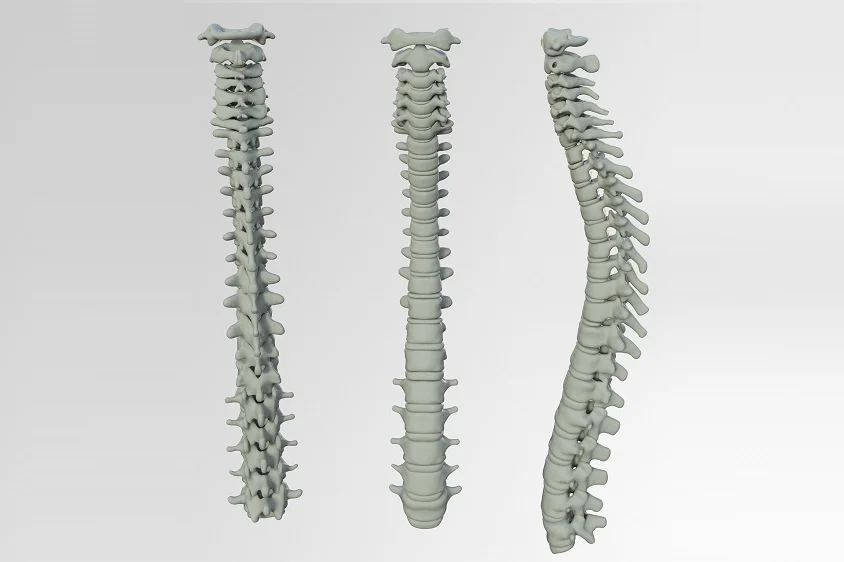When the brain stays on alert, muscles in the torso can lock in place, leading to nagging aches along the spine. In most cases, people miss how feelings can turn into real issues unless they notice the link. Over time, constant grip can evolve into a persistent ache that fails to ease on its own. Tackling both emotional strain and physical tension together is often the best solution for recovery.
Why Anxiety Makes Your Muscles Clamp Up
Under pressure, the body instinctively braces itself, causing fibers around the back and shoulders to contract. This initial squeeze may seem minor, but if it happens often, flexibility drops and discomfort grows. With lingering tightness, spinal alignment shifts and extra load presses on vertebrae and soft tissue. A simple twinge can snowball into chronic soreness if ignored. By spotting emotional triggers early and releasing muscle tension through gentle movements or brief breaks, you can prevent stiffness from becoming a lasting issue.
How Shallow Breaths Add to Spine Strain
Worry often causes breathing changes. Fast, shallow inhales draw mainly from the upper chest, keeping those muscles tense and reducing full oxygen flow. As a result, tissues around the backbone get less nourishment and stay in a guarded state. Over days or weeks, this pattern cements low-level tightness in mid-back areas. Fatigued muscles struggle to support normal posture, leading to further aches. Shifting to slower, deeper breaths relaxes the nervous system and eases strain on spine-supporting fibers, making it easier for your body to unwind.
Ways Tension Messes with How You Stand or Sit
Stress can sneak into posture without a clear sign. You might find yourself slouching or holding shoulders unnaturally high when under strain. These habits distort the spine’s natural curves, forcing some muscles to overwork while others weaken. Repeatedly staying in a flawed state also trains your body to default into that shape, making imbalance and chronic aches more likely.
You can learn to spot poor posture by regularly checking in with yourself throughout the day, or considering chiropractic care and adjusting to a more neutral position helps keep your spine aligned. Simple tweaks like rolling shoulders back or lifting the chest slightly can further ease pressure and reduce pain buildup.
Sleepless Nights Fuel Back Troubles
Racing thoughts at bedtime can leave muscles partly engaged all night. Without deep rest stages, the body misses its chance to fully relax spine-supporting fibers. Morning stiffness or soreness often reflects such incomplete downtime. Less sleep also heightens how strongly you feel discomfort. A small ache can feel much worse after tossing and turning. Adding calming end-of-day habits (like light stretching or breathing exercises) helps the body slip into deeper rest.
Stashing Emotions Leads to Body Strain
Bottling up feelings does not cause them to vanish; the body stores such load as tightness instead. Unspoken frustration, sadness, or worry can settle in areas that support your spine, leading to persistent tension. This hidden grip often resists simple fixes because the root lies in unaddressed emotions. It makes relief through movement or rest harder to achieve.
Talking with someone you trust, jotting thoughts down, or using mindfulness exercises lets this pressure ease. As emotional weight lifts, the body can release knotting around the spine and reduce ongoing aches.
Chronic Worry Hampers Recovery
Healing needs quiet conditions, but ongoing mental strain stirs up inflammation and slows repair. When the nervous system stays on high alert, tissue renewal drags, and progress feels stuck. It is like trying to mend while still reopening the same spot repeatedly. Persistent worry also nudges you toward poor self-care: skipping gentle activity, avoiding therapy exercises, or ignoring small aches until they worsen. Therefore, cutting down mental load not only supports healthier habits but speeds up recovery.
Blending Mental Calm and Physical Care
Treating soreness alone misses half the picture. Mixing gentle movement such as light stretches or simple routines mental care can ease both sources of tension. Practices like easy yoga flows, basic breathing drills, or brief mindfulness breaks help muscles unwind while easing emotional pressure. Seeking guidance from professionals can also provide added benefits. When mental stability and physical care work together, you give your back the best chance to recover fully.
Why Rushing Through the Day Worsens Back Strain
Moving immediately from one task to the next keeps the body in a low-level fight mode. Without short pauses, muscles stay partially clenched, especially around the spine and shoulders. Over time, this steady load leaves tissues worn and less able to reset between activities. Small tweaks like standing up between long sitting spells or pausing to stretch during busy hours can help break this loop. Giving your body even brief moments to unwind can quickly protect your back from accumulating tension.
Endnote
Easing persistent aches means addressing both feelings and muscle tension together. Unchecked worry can lock the body into a guarded state that fuels spinal soreness. By choosing slower breaths, small posture checks, better rest habits, and outlets for emotions, you allow muscles to relax and break the pain loop. A combined focus also helps you move more freely and enjoy days without constant stiffness or discomfort.







